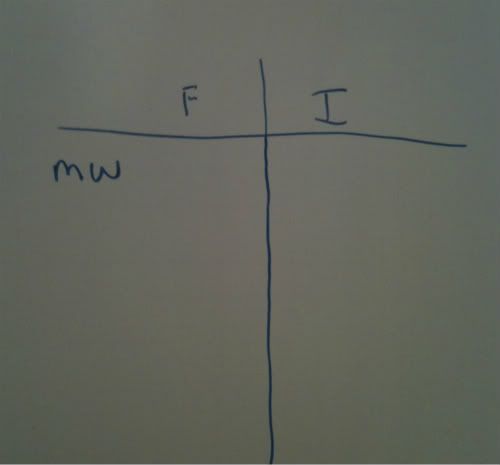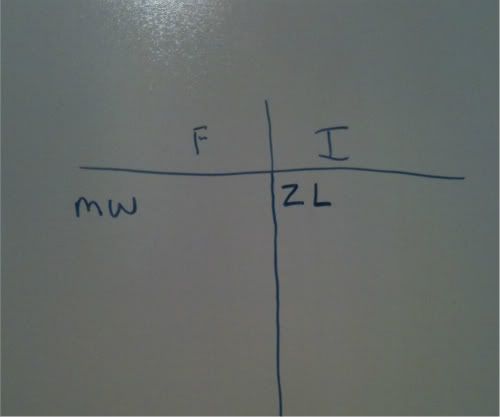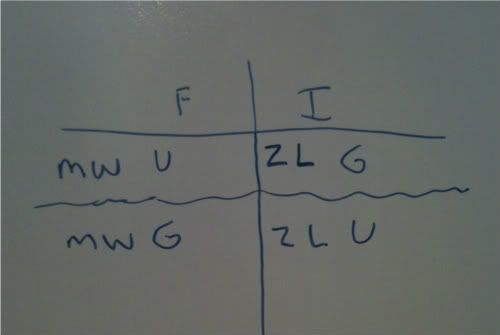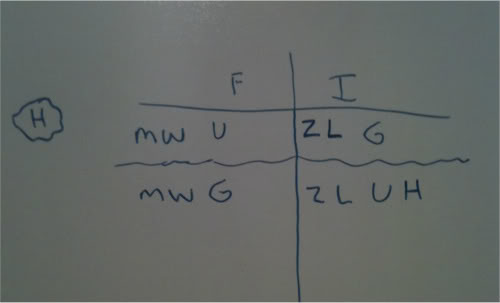LSAT Forum
3 postsPage 1 of 1
-

- hilarykustoff
-
Thanks Received: 0
-
Jackie Chiles

- Posts: 31
- Joined: November 15th, 2011
Q16
Why can't the answer be C? Don't both H and Z have to be on the same committee?
-

- timmydoeslsat
-
Thanks Received: 887
-
Atticus Finch

- Posts: 1136
- Joined: June 20th, 2011

- Most Thanked

- First Responder
Re: Q16
hilarykustoff Wrote:Why can't the answer be C? Don't both H and Z have to be on the same committee?
This is a local question asking us what could be true when M and W are on finance.
I will plug in what we know:

And I know immediately that Z will be on the incentives because of our rule with W and Z being on separate sides.
I also know from the contrapositive that L will be on the incentives.
The rule as written is L(F) ---> M(I) and U(I)
So we know that L could not be on F, so it must be on I. As of right now, we do not know where U is going to go. As of now, it can go I or F. We just know that L could not go to F.

I have placed 4 of the 7 variables. I have 3 left to place: UGH
I know that I have rules governing these variables, one of them being the constant separation of U and G. I now think the most prudent thing to do is to show the possibilities. U in F and then U in I.

I now need to place the last variable of H into these 2 hypotheticals. In the first frame, G is in I, which means that my G(F) --->H(I) rule does not trigger. I could place H in either committee and it will work. I decide to show this by placing an H in a "Noah cloud" which indicates this idea.
As for the second frame, this has G in F. This triggers the rule in question. This will require H to be in I.

As you can see, choice C would have H and Z be together on the F side.
The correct answer is that L and U can be on incentives together, choice D.
-

- stacksdoe
-
Thanks Received: 0
- Forum Guests
- Posts: 54
- Joined: August 19th, 2012
Re: Q16
Hi Hillary, to piggy back off Timmy,
He went the extra mile, but to answer this question you need not go that far. His second diagram where:
M W l Z L
fin. inc.
is sufficient to answer the question, because it eliminates all the incorrect answer choices:
(A) L can not be on fin here, unless your using a different mini sketch lol
(B) We already know that G and U can not be together
(C) Just as in (A) Z can not be in fin. because it is in inc.
(D) we're not sure, so come back
(E) This is essential the same mistake as in (A), and (C)
Thus by process of eliminating the correct answer must be D. We need not even sketch it out. However, you should sketch in review just to get a full understanding. Just as a side note, not many, but a few questions - like this one - can be, and sometimes its better, got by POE.
Any questions, let me know.
Thank you Timmy
He went the extra mile, but to answer this question you need not go that far. His second diagram where:
M W l Z L
fin. inc.
is sufficient to answer the question, because it eliminates all the incorrect answer choices:
(A) L can not be on fin here, unless your using a different mini sketch lol
(B) We already know that G and U can not be together
(C) Just as in (A) Z can not be in fin. because it is in inc.
(D) we're not sure, so come back
(E) This is essential the same mistake as in (A), and (C)
Thus by process of eliminating the correct answer must be D. We need not even sketch it out. However, you should sketch in review just to get a full understanding. Just as a side note, not many, but a few questions - like this one - can be, and sometimes its better, got by POE.
Any questions, let me know.
Thank you Timmy
3 posts Page 1 of 1